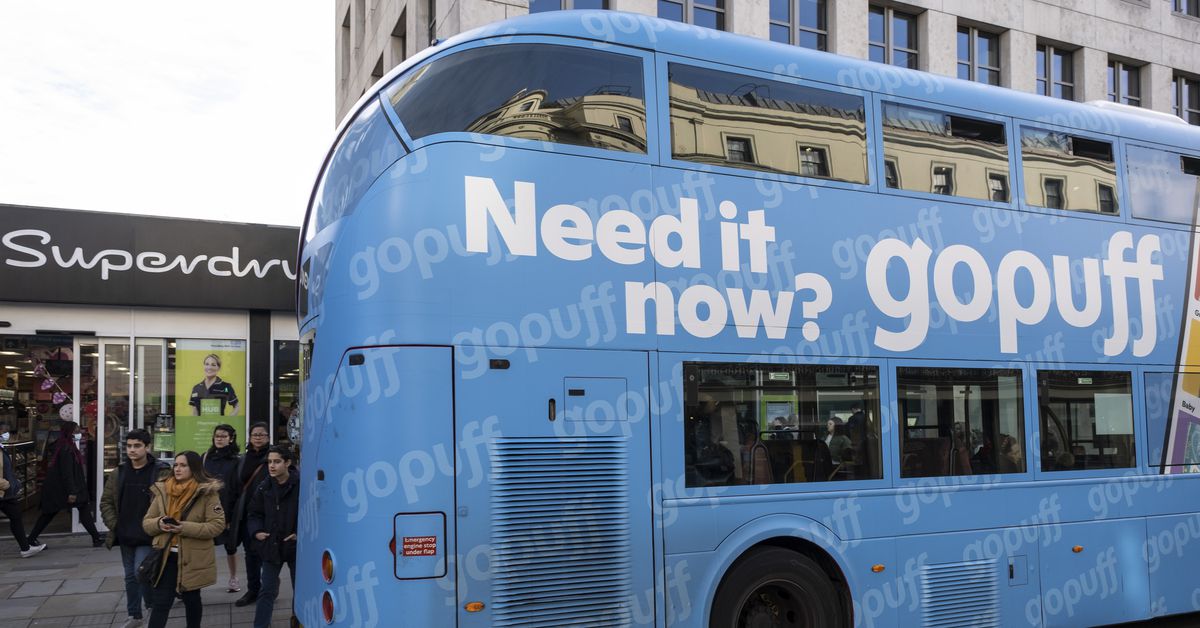
On the morning of May 10, the Information published a hard-hitting story about Gopuff, a much-hyped startup competing in the much-hyped “instant delivery” industry. The company, most recently valued at $15 billion, is bleeding cash and has been struggling to raise new funding. Now, its employees are openly questioning whether its 29-year-old co-founders are in over their heads.
A few hours later, the Information published another item. But this one was emailed directly to some Gopuff employees: Would they like to subscribe to the Information — so they could read other articles like the one it just published about their company?
“Because you work at COMPANY, we thought that you might be interested in this exclusive feature on Gopuff,” read the automated marketing message, which presumably meant to replace “COMPANY” with “Gopuff.” The email included a link to the original piece and an offer for a 25 percent discount for a one-year subscription to the Information, which normally goes for $400.
Welcome to the other part of the subscription boom, the part that’s rarely mentioned in the many stories about Substack and other subscription-based media startups: The difficult, grinding work that goes into finding people who might want to pay for your stuff, getting in front of them, and getting them to take out their credit card.
And yes, in the case of the Information, that can sometimes lead to pitches sent to people working at companies you’ve just written difficult stories about, says Jessica Lessin, the company’s founder and CEO.
“We intentionally reach out to people we think are interested in our articles,” using custom-built software to predict what kind of readers might be interested in a story, she told me. And that could certainly include people who work at a company the Information had just written about. “It’s like Netflix recommendations,” she said.
I do think Lessin and her team are going to have plenty of opportunities to repeat the Gopuff playbook in the coming months, assuming widely held predictions about a tech industry reversal pan out: Easy investor money turns scarce, companies that used to spend wildly become manic cost-cutters, and layoffs turn tech startup employees into ex-startup employees.
At the Information, there are plenty of examples of high-flying tech companies quickly reassessing their plans, halting new hires, or even letting people go as the market convulses: Gorillas, a Gopuff competitor, is laying off 300 people — about half of its headquarters staff; Cameo, a once-buzzy company that lets you hire celebrities to create personalized videos, is cutting 25 percent of its staff; even Amazon is canceling plans to expand its empire of warehouses.
The question for the Information: Is the tech pullback bad for business? Or is it an opportunity?
Lessin is a former Wall Street Journal reporter who launched the Information in 2013, and explicitly set out to compete with the most established business publications in the world: the Financial Times, the New York Times, and her former employer. Her staff of 50 routinely publishes scoops and timely analysis other publications need to follow up on. (Disclosure: I’m such a fan that I asked her and Information reporter Wayne Ma to collaborate with me on a recent season of Recode’s Land of the Giants podcast series, about Apple.)
But as Lessin’s Gopuff fast-twitch marketing underscores, running a successful subscription business requires a lot of work. Simply typing something up and hoping someone pays you to read it is a nonstarter. “One of the big differences between us and different news orgs is we don’t just publish that article on the homepage and hope people find it,” she said.
Earlier in her career, Lessin was obsessed with breaking news; now she is consumed with figuring out how to bring in paying subscribers. She’s tried all kinds of experiments: bundling her publication with others, like Bloomberg; offering student discounts; letting existing subscribers recruit new blood by sending them free articles. She also tries to spread the gospel of the subscription media model, an effort that includes an “accelerator” program for people trying to launch their own subscription-based companies.
The person who sent me the Information’s Gopuff marketing email also added a concern-troll commentary: What if Lessin spends her time chasing stories about wobbly startups so she can sell them subscriptions?
But ick factor aside, I don’t worry about that at all. The obvious truth about journalism biases — one that routinely eludes critics across the spectrum — is that most journalists are biased in favor of novel stories people haven’t heard before. Right now, that’s going to mean focusing on layoffs and cutbacks in a tech sector that has been up and to the right for more than a decade. But the more we see of these, the less novel they’ll be.
Which isn’t to say that layoff and collapse stories don’t bring in eyeballs in the short run. Back when I worked for Insider CEO Henry Blodget in 2007, at what was then called Silicon Alley Insider, we had zero traffic at launch and for months after that.
Then Blodget got a tip that AOL — at the time, still a digital company that people cared about — was going to have significant layoffs. After he published it, traffic spiked, and much of it was coming from IP addresses in Dulles, Virginia — AOL’s headquarters at the time — and we responded by writing story after story about AOL. In theory, our publication covered the business of the internet; in truth, for a time, we were essentially an updated version of Fucked Company (look it up) for a single company.
I don’t see the Information headed that direction. Even if things get very grim in tech, there’s still going to be plenty of other stuff to write about. But if I get a customized email telling me her staff has written a new story about Vox Media, I may have my own worries.






